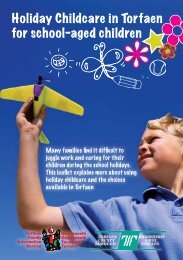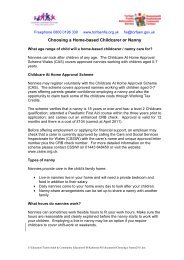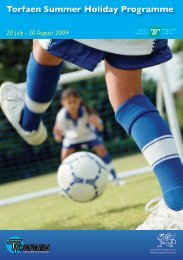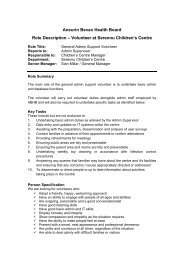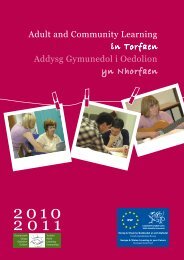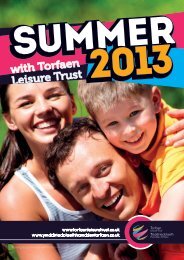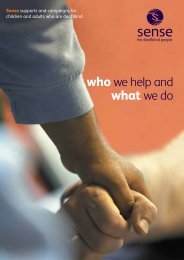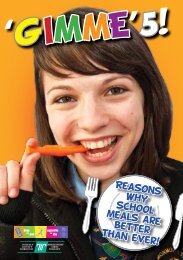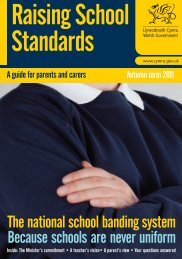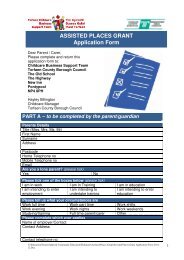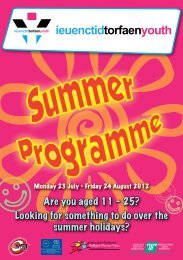Food and Health Guidelines - Torfaen Family Information Service
Food and Health Guidelines - Torfaen Family Information Service
Food and Health Guidelines - Torfaen Family Information Service
Create successful ePaper yourself
Turn your PDF publications into a flip-book with our unique Google optimized e-Paper software.
7. <strong>Food</strong> hygiene <strong>and</strong> safety<br />
<strong>Food</strong> hygiene<br />
Children are more vulnerable to food<br />
poisoning than adults <strong>and</strong> so it is particularly<br />
important for extra care to be taken when<br />
preparing food in Early Years settings.<br />
<strong>Food</strong> poisoning can be a serious illness for<br />
infants <strong>and</strong> young children. It is essential to<br />
store, prepare <strong>and</strong> present food in a safe,<br />
hygienic environment to help prevent harmful<br />
bacteria spreading <strong>and</strong> growing <strong>and</strong> to avoid<br />
food poisoning.<br />
<strong>Food</strong> poisoning occurs when the food<br />
consumed contains harmful bacteria,<br />
viruses or other microbes, collectively known<br />
as germs.<br />
Germs are very hard to detect since they do<br />
not usually affect the taste, appearance or<br />
smell of food. The most serious types of food<br />
poisoning are due to bacteria. The more<br />
bacteria present, the more likely you are to<br />
become ill. Bacteria multiply very quickly<br />
<strong>and</strong> to do so need moisture, food, warmth<br />
<strong>and</strong> time.<br />
All settings that regularly serve snacks<br />
or meals on the premises should be<br />
registered as a food business with their local<br />
Environmental <strong>Health</strong> Department.<br />
General safety issues<br />
• All food h<strong>and</strong>lers must have completed<br />
a recognised <strong>Food</strong> Hygiene course,<br />
for example, Level 2 <strong>Food</strong> Hygiene<br />
Certificate, before providing food. It is<br />
recommended that training be repeated<br />
at least once every 3 years.<br />
• Children under 5 should never be left<br />
alone while they are eating in case<br />
they choke.<br />
• All highchairs should be fitted with<br />
a safety harness which should be<br />
used at all times when children are in<br />
their chairs.<br />
• Children should never be left<br />
unsupervised while in a highchair.<br />
• Whole pieces of nut should not be given<br />
to under-5s in case of choking.<br />
• Insulated cool boxes, or a cool box with<br />
cool packs, should be used for carrying<br />
food when taking children on trips or<br />
outings.<br />
Most food poisoning is preventable.<br />
Children may bring food from home to eat<br />
while they are in childcare. It is helpful if<br />
the childcare setting has its own food <strong>and</strong><br />
nutrition policy (see Section 8). This can<br />
be given to parents to help them choose<br />
<strong>and</strong> prepare food which is sent from home.<br />
For further information see Appendix 6.<br />
1



